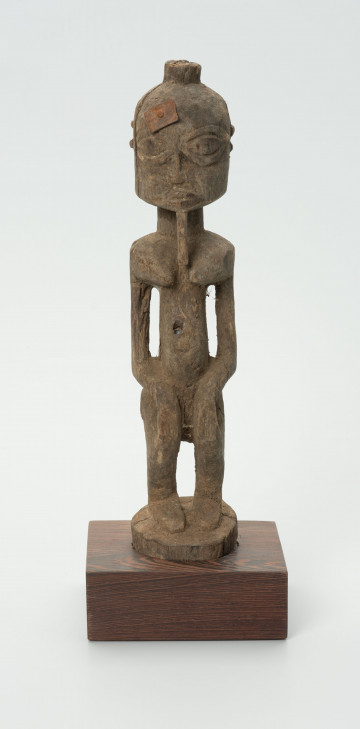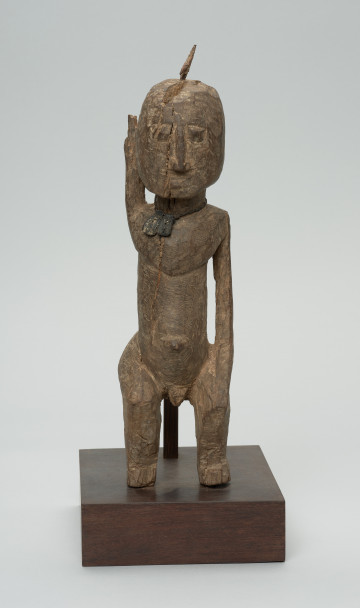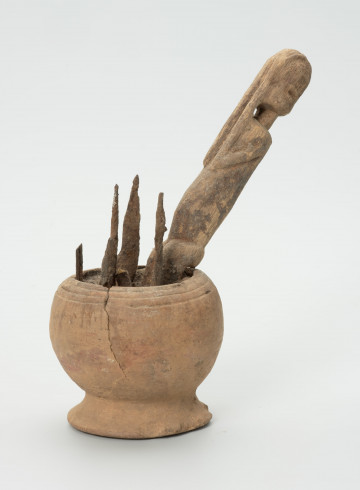
Figure - ancestor
między 1951 — 1991
National Museum in Szczecin
Part of the collection: Collection of Dogonian art
The Dogon are people living in the Republic of Mali. The basis of their economy is hoe-farming, and many of the Dogon annual rituals are related to ensuring a good harvest. To this end, they thank the god Amma and their ancestors for a good harvest while also asking for blessings for the coming field season. The two most important festivals associated with the agricultural calendar are Goru and Bulo, during which the priests of the two cults of life, Hogon (priest of the Lebe cult) and Binukedine (priest of the Binu cult), work together. The festival of Goru is celebrated after the harvest, usually in late December or early January. The etymology of the name of this festival is interesting. The word goru is translated as glad. However, some believe that it is onomatopoeia, because the sound of this term, according to the Dogon, resembles the sound of boiling millet pulp. Many of the modern inhabitants of the Bandiagara Escarpment, on the other hand, derive the term goru from the word gor meaning deceased ancestors, who come to the villages at night on this day to celebrate with their living relatives.During the harvest festival, newly harvested grain mixed with water and animals such as chickens, rams and goats is offered to metaphysical beings and ancestors. The mixture of grain and water is called bago di (water of the new year). The only grain that is not allowed to be sacrificed during the Goru festival is fonio, the smallest grain in the world, called po (Digitaria exilis from the Poaceae family) in the Dogo-so language. The fonio was stolen by Yurugu, a rebellious son of the god Amma, at the beginning of the world's creation. Although it occupies an essential place in the Dogon mythology, it is considered unclean and, therefore, has no place among the offerings made in thanksgiving for the harvest.
Ewa Prądzyńska
Author / creator
Dimensions
cały obiekt: height: 20,4 cm, width: 12,5 cm
Object type
sculpture
Creation time / dating
Creation / finding place
Identification number
Location / status

między 1951 — 1991
National Museum in Szczecin

między 1951 — 2000
National Museum in Szczecin

między 1951 — 2000
National Museum in Szczecin
DISCOVER this TOPIC
National Museum in Szczecin
DISCOVER this PATH
Educational path